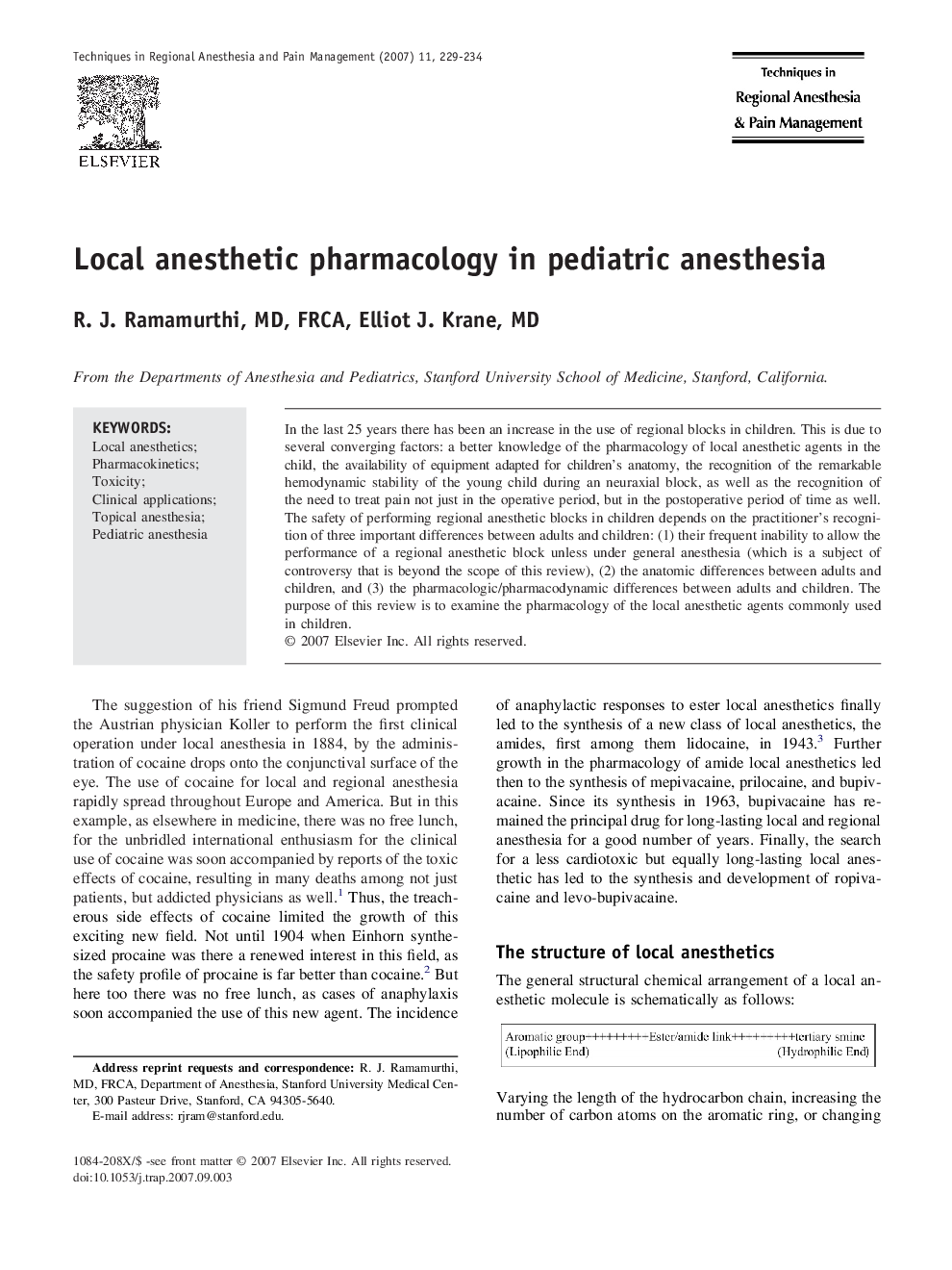| Article ID | Journal | Published Year | Pages | File Type |
|---|---|---|---|---|
| 2772328 | Techniques in Regional Anesthesia and Pain Management | 2007 | 6 Pages |
In the last 25 years there has been an increase in the use of regional blocks in children. This is due to several converging factors: a better knowledge of the pharmacology of local anesthetic agents in the child, the availability of equipment adapted for children’s anatomy, the recognition of the remarkable hemodynamic stability of the young child during an neuraxial block, as well as the recognition of the need to treat pain not just in the operative period, but in the postoperative period of time as well. The safety of performing regional anesthetic blocks in children depends on the practitioner’s recognition of three important differences between adults and children: (1) their frequent inability to allow the performance of a regional anesthetic block unless under general anesthesia (which is a subject of controversy that is beyond the scope of this review), (2) the anatomic differences between adults and children, and (3) the pharmacologic/pharmacodynamic differences between adults and children. The purpose of this review is to examine the pharmacology of the local anesthetic agents commonly used in children.
